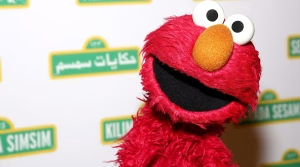Five Years After Ferguson
Published August 8, 2019
The fatal shooting of Michael Brown by then-Ferguson police officer Darren Wilson in 2014 made the suburb of Ferguson a household word nationwide, but it was hardly a distinction that anyone would welcome.
Mention the word “Ferguson” in the months and even years after Brown’s death and the unrest that followed, and it was immediately clear what you were referring to: not the north St. Louis County city proud of its past, but the stretch along West Florissant Avenue, where pitched battles occurred between angry protesters and heavily armed police, backed by military equipment including tanks and helicopters.
Five years later, much has changed, both in Ferguson and in the relationships between black and white, between government and the public it serves and between the legal system and people who had been too often mistreated. The assertion that black lives matter has taken on new meaning. Sadly, many injustices, prejudices and unsolved problems remain.
One of the biggest changes may be the spotlight that has been focused on diversity and racial inequality, a change that many St. Louis Jewish groups and individuals helped bring about. In a metropolitan area where race often plays a crucial role, problems are often painted in black and white. The Ferguson wake-up call has led to the formation of many efforts dedicated to helping solve what has so far proved to be a largely intractable problem.
That awareness and dedication to improvement, in turn, has led to concrete changes in areas that may seem minor but can be the kind of daily affronts that simmer until something like the killing of Brown ignites an explosion.
The oppressive treatment of poor defendants in municipal courts, for example, or the many suspects arrested for relatively minor infractions, set an unfortunate example, because most of those defendants are African-American. Changes in fines and bond requirements help generate more respect for the legal system and make difficult lives a little easier.
In Ferguson when Brown was shot, only one of six City Council members was black, in a city with a majority of black residents.The killing and the unrest that followed energized African-American residents to the point that the council moved to its first black majority, more closely reflecting the racial makeup of the city. On a broader stage, young black candidates have won election to more offices in local and state government.
Jewish individuals and groups that have taken leadership roles in bringing change in the wake of Ferguson include the local chapter of the Anti-Defamation League, Jews United for Justice, and rabbis such as Susan Talve and Randy Fleisher of Central Reform Congregation. Working within the Clergy Coalition, they helped organize a rally just a few weeks after Brown was killed and have been active in the push for change ever since.
The Michael and Barbara Newmark Institute for Human Relations at the Jewish Community Relations Council has responded to the need for greater dialogue between African-American and Jewish groups. Last year, the commission sponsored a yearlong commemoration of the deaths of Martin Luther King Jr. and Sen. Robert Kennedy, which included a major exhibit at the Missouri History Museum.
And Karen Aroesty, regional director of the ADL in St. Louis, noted that her group had conducted educational programs against bias for many years before Brown died.
“We were engaging in civil rights advocacy in coalitions and yes, with police departments, to reduce bias and prejudice,” she told the Jewish Light. “Had we made improvements before Aug. 9, 2014? Yes. Have we overcome the structure of racism in the region that the events of that week exposed? Not nearly enough.
“In the last five years, though, the region has a much better understanding of what it takes to drive positive impact in the community on trust and policing, in municipal court reform, and even in police anti-bias education.”
Of course, much remains to be done. The legacy of the killing of Michael Brown is still a work in progress. His father, Michael Brown Sr., started a foundation dedicated to helping youth and strengthening families. He told the Post-Dispatch last month that as painful as his son’s death was, it also had a beneficial effect.
“He definitely opened up the world and put it on a microscope,” Brown said. “And people are definitely watching and seeing, when I guess they were blind to what was going on. I tell people all the time he is still working from the grave.”
Dwayne James, who was the only black member of the Ferguson City Council at the time that Brown was killed, is no longer in that post. But that doesn’t mean he has stepped back from a civic responsibility to improve lives in Ferguson and elsewhere.
“I’m still doing community work,” he told the Post-Dispatch. “I’m doing it with a more defined purpose.”
That word “still” comes up often in conversations with those working to correct the problems laid bare five years ago. A stigma remains attached to Ferguson, people are still working to erase it and issues remain unresolved.
Ideally, when the 10th anniversary of Brown’s death comes around in 2024, media reports can talk more about the progress that’s been made and less about the problems that still must be confronted.
















